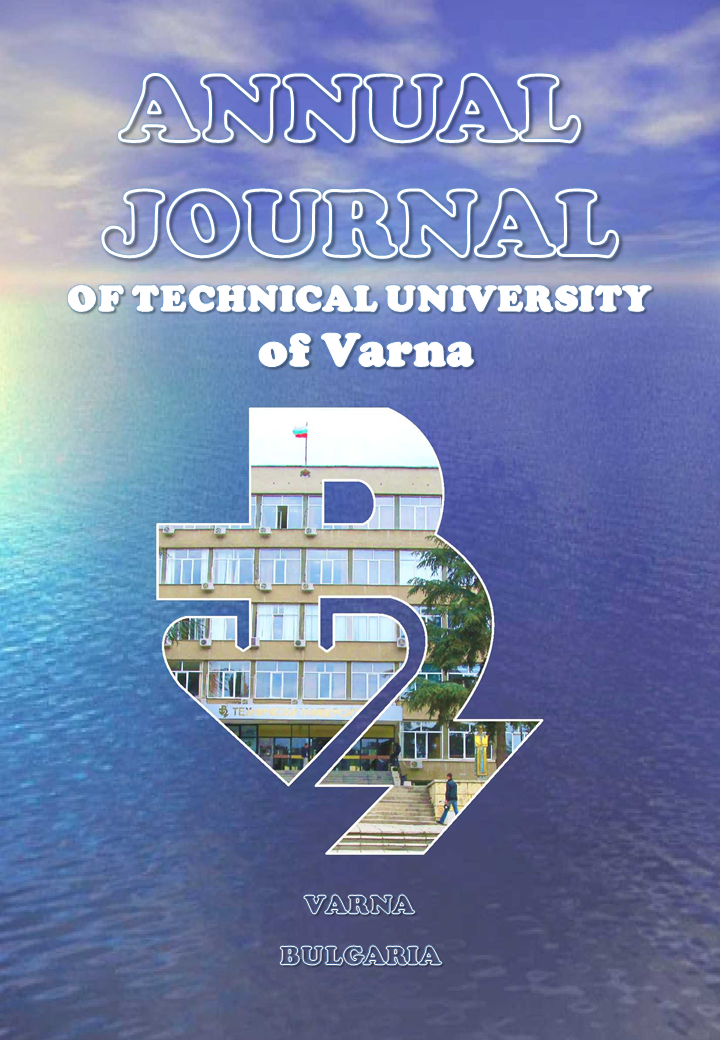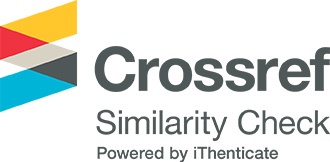Декоративни паравани като разделители на помещения: тяхната историческа употреба, съвременни материали, предимства и приложения
##semicolon##
https://doi.org/10.29114/ajtuv.vol7.iss1.291##semicolon##
decorative screen##common.commaListSeparator## room dividers##common.commaListSeparator## space design##common.commaListSeparator## interior separatingАбстракт
Интериорните паравани имат завладяваща история като декоративни прегради на помещения, датираща още от древни времена. Днес те остават популярен избор за създаване на пространствени разделения в различни помещения, включително ресторанти, хотели, офиси и домове. Тази статия разглежда предимствата на използването на декоративни паравани за зониране на помещения. Подчертават се функционалните предимства на декоративните стени, като способността им да създават уединеност, без да блокират напълно пространството, както и възможността да бъдат премествани и пренареждани според нуждите. Освен това декоративните решетки предлагат естетически предимства, като например това да са акцентен в интериора, създавайки визуални ефекти и текстура.
Изтегляния
##submission.citations##
<p>Bankova. A., Tsoneva Z. (2022) Building expert maps for ergonomic, compositional and color scheme evaluation of machine control panels<em>. INNO Journal - Innovations in Woodworking Industry and Engineering Scientific journal issued by the Faculty of Forest Industry, University of Forestry – Sofia, Bulgaria Volume</em> XI Sofia, Issue 1/2022 (21): 5–12, ISSN 1314-6149, e-ISSN 2367-6663</p>
<p>Becker, F. D., Gield, B., Gaylin, K., & Sayer, S. (1983). Office design in a community college: Effect on work and communication patterns. <em>Environment and Behavior</em>, <em>15</em>(6), 699-726. <br /><a href="https://doi.org/10.1177/0013916583156002" target="_blank">Crossref</a></p>
<p>Beyrouthy, C., Burke, E. K., McCollum, B., McMullan, P., & Parkes, A. J. (2008). Evaluating the space planning benefits of partitionable rooms. In <em>Proceedings of the 7th International Conference on the Practice and Theory of Automated Timetabling (PATAT 2008)</em>.</p>
<p>Brennan, A., Chugh, J. S., & Kline, T. (2002). Traditional versus open office design: A longitudinal field study. <em>Environment and behavior</em>, <em>34</em>(3), 279-299.<br /><a href="https://doi.org/10.1177/0013916502034003001" target="_blank">Crossref</a></p>
<p>Cederquist, E., (2018). Designing Private Spaces with Room Dividers and Partitions. <em>Journal</em> <em>Hospitality Design.</em></p>
<p>Christensen, E. (1992). Room dividers.</p>
<p>Dobreva, D. (2020) Optimizing library space in public libraries in Varna. <em>KNOWLEDGE - International Journal</em></p>
<p>Frank, M. C., Wysk, R. A., & Joshi, S. B. (2004). Rapid planning for CNC milling—A new approach for rapid prototyping. <em>Journal of Manufacturing Systems</em>, <em>23</em>(3), 242-255.<br /><a href="https://doi.org/10.1016/S0278-6125(04)80037-2" target="_blank">Crossref</a></p>
<p>Hertzberg, A., Ritter, H., and Shamiyeh, M. (2016). Design and Evaluation of Room Dividers. <em>Environment and Planning B: Planning and Design</em></p>
<p>Santos, S., (2019). Decorative Screens: An Alternative to Traditional Walls. <em>Architectural Digest.</em></p>
<p>Senthilkumar, V. (2014). Laser cutting process-A Review. <em>International journal of Darshan institute on engineering research & emerging technologies</em>, <em>3</em>(1), 44.</p>
<p>Smith-Jackson, T. L., & Klein, K. W. (2009). Open-plan offices: Task performance and mental workload. <em>Journal of environmental Psychology</em>, <em>29</em>(2), 279-289. <br /><a href="https://doi.org/10.1016/j.jenvp.2008.09.002" target="_blank">Crossref</a></p>
<p>Szabó G., Balogh Z., Dovramadjiev T., Draghici A., Gajšek B., lulić T. Jurčević, Reiner M., Mrugalska B., Zunjic A. (2021) Introducing the Ergonomics and Human Factors Regional Educational CEEPUS Network, <em>Acta Technica Napocensis, Series: Applied Mathematics, Mechanics, and Engineering</em>, 64 (1) (2021), pp. 201-212</p>
<p>Van Der Reyden, D. (1988). Technology and treatment of a folding screen: comparison of oriental and western techniques. <em>Studies in Conservation</em>, <em>33</em>(1), 64-68. <br/><a href="https://doi.org/10.1179/sic.1988.33.1.64" target="_blank">Crossref</a></p>
##submission.downloads##
Публикуван
##submission.howToCite##
Брой
Раздел (Секция)
##submission.license##
СПОРАЗУМЕНИЕ ЗА ПУБЛИКУВАНЕ
Годишника на Технически университет - Варна (ГТУВ) цели да гарантира, че постъпващите статии се публикуват, като същевременно се предоставя значителна свобода на публикуващите ги автори. За изпълнение на тази цел, ГТУВ поддържа гъвкава политика относно авторските права, което означава, че няма прехвърляне на авторски права от автора на издателя, а авторите запазват изключително авторско право върху интелектуалното си произведение.
При изпращане на статия, Отговорния автор трябва да се съгласи и приеме правилата и условията за публикуване, изложени в настоящото Споразумение за публикуване, които са както следва:
ПРЕДОСТАВЯНЕ НА ПРАВА ОТ ОТГОВОРНИЯ АВТОР
Отговорния автор предоставя на ГТУВ за времето на пълния срок на авторското право и всяко следващо удължаване или подновяване, следното:
• Неотменимо, неизключително право да публикува, възпроизвежда, предоставя, разпространява или по друг начин използва предоставената работа в електронни и печатни издания и в производни произведения в целия свят, на всички езици и във всички известни съществуващи или в последствие възникнали медии.
• Неотменимо, неизключително право да създава и съхранява електронни архивни копия на работата, включително правото да депозира предоставената работа в дигитални хранилища с отворен достъп.
• Неотменимо, неизключително право на лицензиране на други лица да възпроизвеждат, превеждат, преиздават, предоставят и разпространяват предоставената работа при условие, че авторите са надлежно идентифицирани (за момента това се извършва чрез публикуване на произведението под лиценз Creative Commons Attribution 4.0 Unported).
С предоставянето на работата за публикуване, авторските права върху материала остават на авторите. Авторите запазват всички патентни, търговски марки и/или други права върху интелектуалната си собственост.
ЗАДЪЛЖЕНИЯ НА ОТГОВОРНИЯ АВТОР И СЪАВТОРИТЕ
При последващо разпространение или повторно публикуване на предоставената работа, Отговорния автор се съгласява да идентифицира ГТУВ, в който е публикувано произведението като първоначален източник на първото публикуване на работата. Отговорния автор гарантира, че съавторите също ще посочват ГТУВ като източник на първото публикуване, когато разпространяват, преиздават или се позовават на настоящата работа в бъдещи свои публикации.
ГАРАНЦИИ ОТ СТРАНА НА ОТГОВОРНИЯ АВТОР
Отговорния автор гарантира че предоставената за публикуване работа не нарушава никои действащи нормативни разпоредби или законни права на която и да е трета страна. Същия гарантира че работата не съдържа какъвто и да е материал, който може да се възприеме от читателската аудитория като неетичен, компрометиращ, нехуманен, расистки, клеветнически и/или нарушаващ авторски и/или имуществени права, права на интелектуална собственост или поети ангажименти за поверителност към трети страни. Отговорния автор гарантира че предоставеният материал е с оригинално съдържание, не е официално публикуван в никое друго издателство, както и че не е в процес на публикуване пред други издателства. Отговорния автор също така гарантира че притежава съответните правомощия да сключи настоящото споразумение. Ако предоставяната работа е подготвена съвместно с други съавтори, Отговорния автор гарантира че всички останали съавтори са информирани и са съгласни предоставения материал да бъде публикуван в ГТУВ.
Отговорния автор лично (или от името на авторския колектив) дава съгласието си да не въвлича по никакъв начин ГТУВ като страна в каквито и да било научни, академични, административни и/или съдебни спорове, в случаите на установени нарушения на горепосочените декларации и гаранции.
ПРАВА И ЗАДЪЛЖЕНИЯ НА ГТУВ
ГТУВ се съгласява да публикува предоставения материал, в случаите когато същия отговаря напълно на всички необходими качествени, технически и редакционни изисквания, като го идентифицира еднозначно с авторите му. В следствие на настоящото споразумение, на ГТУВ се предоставя правомощие да упражнява права при необходимост от името на авторите върху трети лица, като например в случаите на установено плагиатство, нарушаване на авторски права и др.
Декларация за поверителност на лични данни
Вашите имена и имейл адреси, въведени в уебсайта на ГТУВ, ще бъдат използвани само и изключително за обявените цели на настоящото списание и няма да бъдат използвани за никакви други цели от издателя или предоставяни на друга - трета страна.
Издателят се задължава да извърши всички необходими действия, цялата предоставена лична информация да остане конфиденциална, в рамките на издателя и да не бъде споделена с външни обекти или субекти, освен ако не е дадено предварително изрично разрешение от собственика на личните данни.
Вашата лична информация няма да бъде обект на продажба, разпространение или публикуване по какъвто и да е начин и под каквато и да е форма.









